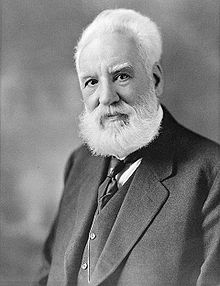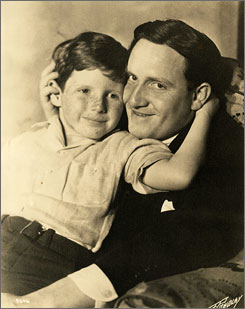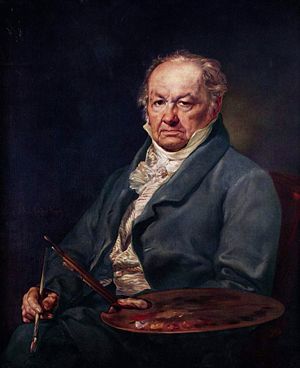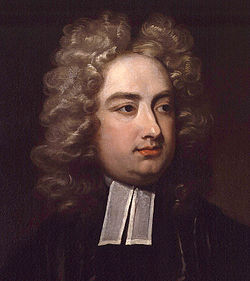What matters deafness of the ear, when the mind hears. The one true deafness, the incurable deafness, is that of the mind.
Victor Hugo
Around 1 in 1,000 newborns present with profound hearing impairment with genetic factors possibly accounting for as many as half. At present 120 genes have been found, that when mutated, are responsible for deafness. However, more than half of all recessively inherited deafness results from mutations in only one gene, known as connexion 26.
In addition to single gene defects affecting only deafness there also nearly 400 syndromes in which deafness is a feature. Waardenburg Syndrome is one of the most common.
Some individiuals develop a progressive deafness occurring in adulthood, such as due to abnormal growth of bone in the inner ear characteristic of otosclerosis.
Around 24,000 people in the UK are both deaf and blind with the majority losing their senses later in life from infections such as rubella. The major genetic cause for deaf blindness is Usher syndrome.
Some autoimmune disorders can also affect the workings of the inner ear, such as Vogt-Koyanagi-Harada syndromethat can result in permanent deafness and balance/coordination problems
The balance organs in the inner ear basically consist of tubes and cavities containing fluid and small hairs which are moved in response to motion of the head. Spinning around, can cause the fluid to keep sloshing around long after motion has ceased, with the hair cells still informing the brain that the body is still moving, even after it has stopped – this causes the dizziness. A similar situation can occur whilst reading in a moving car – the inner ear senses the movement of the vehicle, but the eyes see only the book which is not moving. The resulting sensory conflict can lead to the typical symptoms of motion sickness, such as nausea. Nausea in Greek means seasickness (Gr. naus; ship).
Defects in the regulation of the fluid in the tubes of the inner ear causes Ménière’s disease, while another disorder effecting balance is the rare inherited condition, known as Joubert’s syndrome results from defects in regions of the brain involved in processing signals involved in balance regulation.

Otosclerosis



The most important cause of chronic progressive hearing loss in adults and can be thought of as a mild form of osteogenesis imperfecta with mutations in collagen genes being shown to lead to abnormal growth of bone near the middle ear.
Ludwig Van Beethoven produced some of his greatest works, such as Ode to Joy in 1824, after he became totally deaf; some believe his deafness enhanced his creative genius. It was at around the age of thirty that he began to suffer from buzzing in both ears. Sometimes this would clear for a few months at a time but it eventually ended in complete deafness. His autopsy on March 27th 1827, by a Dr. Wagner, discovered that his ear cartilage was large and misshapen suggesting that his hearing loss occurred through abnormal growth of bone in the inner ear, which is a characteristic of otosclerosis. In addition to the bones in his inner ears, a number of Beethoven’s other bones also continued to overgrow. His head became increasingly large, with a prominent forehead, enlarged jaw, and protruding chin.
A number of other musicians have also suffered from this including Dina Carroll, and also Frankie Valli of the 4 seasons.
Connexion 26
Around 4 percent of the population carry a mutant connexion 26 (Cx26) gene which normally produces a protein important in forming channels between cells to allow for the passage of small molecules and ions important in the inner ear. More severe disruptions of this same gene also lead to skin abnormalities. Individuals having only one copy of such a mutant gene tend to develop increasing skin thickness suggesting that a selective advantage could exist for this gene providing protection against possible cuts and infections, perhaps explaining why so many of the population still carry this gene variant.


Another possible reason for the high frequency of this gene mutation, and other deafness-causing genes, are the establishments of institutions for the deaf leading to intermarriage among the deaf – in the US a staggering 85 percent of individuals with profound deafness marry another deaf person. This is supported by the fact that 200 years ago Cx26 deafness was half as common.
Alexander Graham Bell, whose mother and wife were both deaf, speculated that continued intermarriage among the deaf might someday result in the formation of a hearing-impaired race. This prompted him to suggest closing residential schools for the deaf in favour of mainstream education.
Waardenburg Syndrome
Autosomal dominant
1:45,000
Waardenburg syndrome is a group of inherited conditions which account for around 1 percent of all deaf individuals. The disease is characterized by hearing loss and changes in pigmentation of the hair, skin, and eyes. Affected individuals often have very pale blue eyes, heterochromia, and distinctive hair colouring such as a patch of white hair often known as a witch’s streak.
Though the syndrome derives its name from the Dutch doctor Petrus Johannes Waardenburg, it was actually Charles Darwin who first linked reductions in pigments to hearing impairments, observing that “cats which are entirely white and have blue eyes are generally deaf”. This is because melanin, the dark pigment found in the skin and the eyes, also has a function in the development in the ear; Waardeburg syndrome results from mutations in certain genes effecting the production of this pigment.
The philanthropist Lucy Aldrich’s (the sister of Abby Aldrich Rockefeller) congenital deafness is thought to have been a result of this disorder that further affected several generations of her family.

Jervell and Lange-Nielsen Syndrome
Autosomal recessive
1:200,000
Jervell and Lange-Nielsen syndrome results from defects in a gene producing a protein involved in potassium ion channels, which in addition to the ear, are also important for heart muscles. This disorder is often the main suspect in the rare cases of sudden death among deaf individuals.
This was first noted in 1856 when a girl by the name of Steinin, at the Leipzig School for the Deaf, collapsed and died while being publicly admonished by the Director for a misdemeanour. When the parents were informed it emerged that two of the girl’s deaf brothers had also previously died following episodes of emotional stress.
Usher Syndrome
Autosomal recessive
1:25,000
The major genetic cause for deaf blindness is Usher syndrome resulting from mutations in a number of different genes playing roles in the development of the inner ear and retina. It is characterized by deafness at birth and a gradual vision loss during the first decade of life.
One well known case of Usher syndrome was John Tracy, the son of the American actor Spencer Tracy and his wife Louise. It was through their son that they founded the John Tracy Clinic in 1942, a private, non-profit education centre for infants and preschool children with hearing loss in Los Angeles, California, USA. It still provides free services worldwide for parents of children with hearing loss.

Vogt-Koyanagi-Harada Syndrome
The Spanish painter Fransisco Goya suffered from an autoimmune disorder known as Vogt-Koyanagi-Harada syndrome which left him permanently deaf in 1792. In addition to the hearing loss he also suffered problems with balance and coordination. This is because the sensory organs for the detection of orientation and movement are also found in the inner ear.
Isolated from others by his deafness, he became increasingly occupied with the fantasies and inventions of his imagination and it has been suggested that the intensely haunting themes of Goya’s “Black Paintings”, created in the later years of his life, were influenced by his disease.

Ménière's Disease
One of the major conditions affecting the inner ear and leading to vertigo is Ménière’s disease in which an excess of fluid in the inner ear causes a swelling of the tubes and cavities in the inner ear. Although Ménière’s disease was originally assumed to be sporadic, over half of cases report other family members with the disorder, though no genes associated with the condition have yet been found.
The author of “Gulliver’s Travels”, Jonathan Swift suffered most of his life from periodic bouts of deafness, sometimes combined with illness or giddiness. He described rarely feeling safe from attacks of vertigo or from a deafening sound like rushing water in his ears that blocked out human voices. This worsened as he grew older, which, possibly in conjunction with Alzheimer’s disease, led to him being declared of unsound mind three years before his death in 1742. Swift had predicted his mental decay when he was about fifty and had remarked to the poet Edward Young when they were gazing at the withered crown of a tree: “I shall be like that tree; I shall die from the top.” It seems likely that the disorder that affected Swift was Ménière’s disease, though it was over 100 years later, in 1861, that the disorder eventually acquired a name through the French physician Prosper Ménière.


A number of other high-profile people also appear to have suffered with this condition. Martin Luther often wrote about the distresses of vertigo, suspecting Satan to be the cause. More recently, Marilyn Monroe was known to experience the vertigo and compromised hearing associated with Ménière’s.
Joubert's Syndrome
Joubert’s Syndrome is caused by mutations in a number of different genes resulting in the underdevelopment of the cerebellum, a small part of the lower portion of the brain important for coordinating movements.
The British film-maker Andrew Kötting’s documentary-style movie, “Gallivant” (1996), records a journey he took clockwise around the coast of Britain accompanied by his eight-year-old daughter Eden, who suffers from the disorder. Premiered to great acclaim at the Edinburgh Film Festival, it won the Channel 4 Best New Director prize thus raising awareness of this medical condition.

